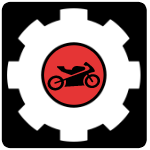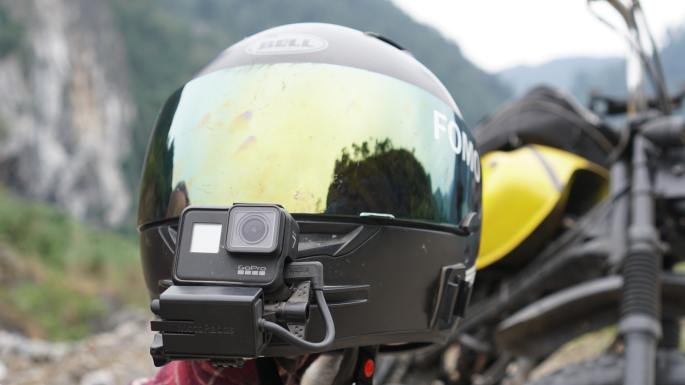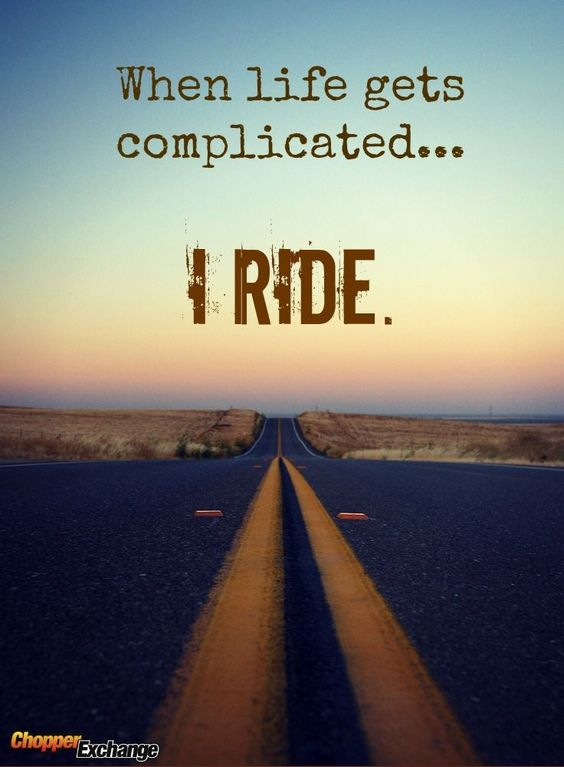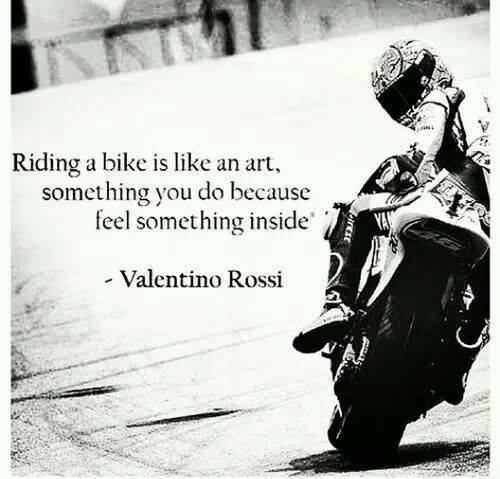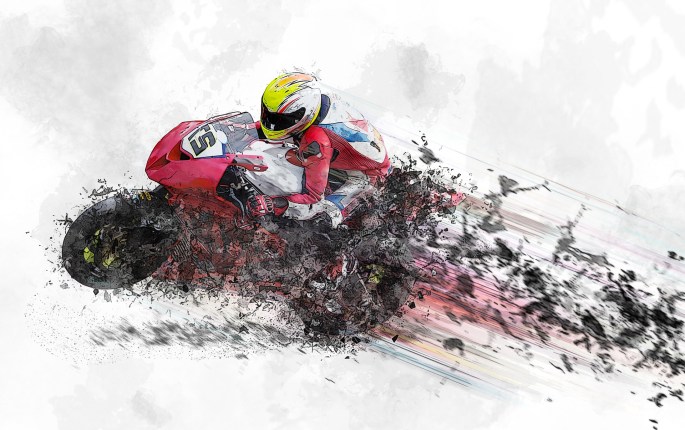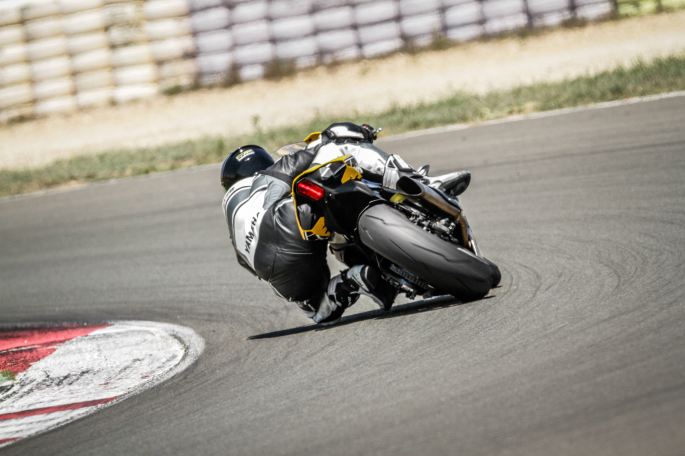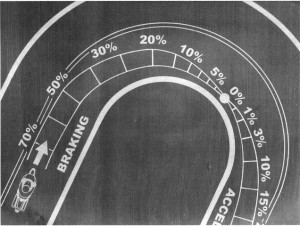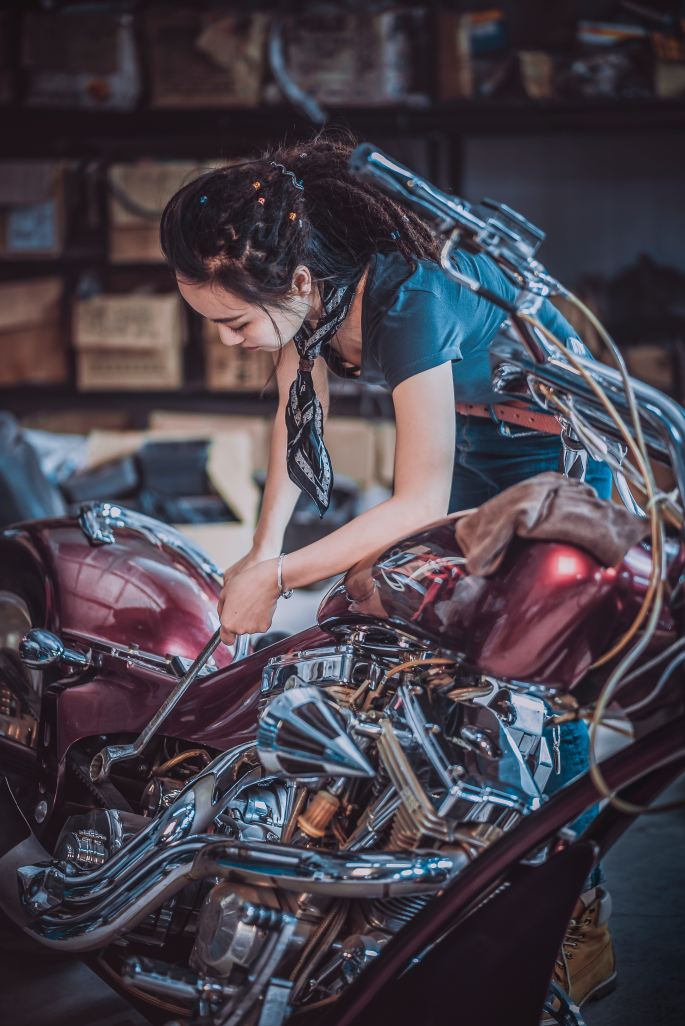
Counter steering it something you may do naturally when you ‘lean’ your bike, but being able to countersteer intentionally could save your life. Ask your fellow riders, what is countersteering, and see what they say.
In my motorbike training, when I was learning to ride, counter-steering wasn’t formally taught or even really mentioned. It is clear why : because counter steering can be a difficult concept for a new rider. The riding school instructors did not want to confuse students – because when you try to lean your motorcycle to turn, you naturally make the steering inputs needed to counter steer. Did you know this?
The next sentence, is one to commit to memory. It is all you need to know about counter steering. Practice it on the road, every single time you ride. This is my simple definition of what counter steering is:
Push the handlebar grip away from you on the left – the bike will lean left and turn left, push the right grip away – the bike will lean right – and turn right. It is really as simple as pushing away from you on the side you want the motorcycle to lean towards.
Smart MOTORCYCLING guide
So how do many riders naturally counter steer without knowing that they are doing it? It’s simple to explain this; when you shift your body weight to the left and try “make your weight lean your motorbike”, you end up pushing the left grip of your handlebar very slightly away from you! You ARE counter steering, your “body weight” is NOT leaning your motorbike. Getting a bike leaned over requires overcoming the powerful forces keeping the bike upright at speed—including inertia and the gyroscopic forces of spinning wheels. It is counter steering that leans your bike over.
The more power you put into counter steering (pushing that grip away from you) the harder the front tire pushes to lean the bike, and the quicker it will lean. The longer you hold pressure on the grip, the further over the bike will lean during the counter steering input.
You can stop reading here – you do not need to know any more. Thinking about how this all works is why some riding schools do not ‘teach’ counter steering to new riders, because it is “counter intuitive”! If you think about the words in definition above – you are actually turning your front wheel to point away from the direction you want your motorbike to turn and lean towards. This is why is it called ‘counter’ steering, which is why it can be confusing!
It is worth noting that counter steering really only comes into affect when there enough centrifugal forces at work. When you’re riding really really slowly in a car park, then you might just steer normally. While you do not need know the physics, appreciating forces at work when you ride, might help some people.
On my very first ride on the road, I knew something wasn’t right. I was trying to “shift my weight” to “lean” the bike over so that it would turn. It just didn’t feel as if it was an accurate input. On that first ride, on a tight corner, I ran wide towards the outside of the turn. I “leaned”…and while the bike did slowly react (and I made it around the bend) I did not feel in control.
I would urge you , do not just ‘read’ the definition above, go out to your bike and test it, practice it, develop your skills and become a better rider. Without understanding counter steering, you might never be as good a rider, or as safe a rider, as you could be. Speak to any track rider, or any professional motorcyclist – they USE counter steering, as a very intentional steering input – they will push the left grip away – lean the bike left, turn left.
You want to learn about the physics?
I don’t think you need to know the detail, but do check the this Wikipedia Article if you really want to!
In simple terms when you’re turning your motorbike steering, think about how your wheels make contact with the ground, the rotational motion allows them to roll forward , but they don’t rotate side to side across the road too – in fact they are kind of stuck to ground when it comes to lateral side-to-side motion ( unless you’re driving on oil or ice!).
Now remembering that if your tyres are stuck the the ground (laterally), and say you move your steering input to point your front wheel to the right (so pressing on the left grip away from you), the forces in the gripping contact patch are at ground level, and effectively pull the wheels “out from under” the bike to the right
This “out tracking” of the front contact patch un-balances the bike so that it falls into a lean. Imagine kicking the feet out from under someone; their feet go right, but their body falls to the left.
Your whole bike is the same as that body, it is above that contact point with the road, so as the wheels go out from under you in one direction, (say to the right) your bike imbalances and causes it to lean to the left. As the bike leans, the physics connected with of the shape of your tyres and the rotational contact with he road comes into play. (Among other centrifugal forces, friction coefficients & many other complex things)

Leaning and turning go together in part because of the profile of a motorbike tyre. The outer edges of the tyres are smaller in diameter than the center. When you are riding straight up the tires act like a cylinder and so roll straight ahead, like a can rolling straight across a table. When you lean the bike over, the tyre becomes more like a cone and so it starts rolling in a circle, kind of like a funnel rolling across a table top.
Think about when you are driving a car; say you have a tissue box in the middle of back seat. You make a hard right turn. Which direction will the tissue box slide? To the left : these are the same forces that cause your bike to lean to the left when you ‘turn’ your wheels to the right.
In summary – my advice is to forget the physics and remember this:
- Look where you want to go. Your head position is the most important guide to a successful corner.
- Counter steer. “Push the handlebar grip away from you on the left – the bike will lean and turn left, push the right grip away – the bike will lean right – and turn right. It is really as simple as pushing on the grip on the side you want the motorcycle to lean towards.“
Coach yourself daily: “look, push, look, push…”
If you are interested in improving your riding even more: please read our post on trail braking here.
Ride safe, ride smart. Smart Motorcycling Guide.
